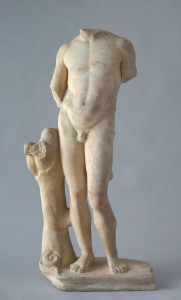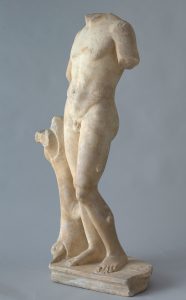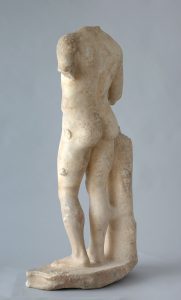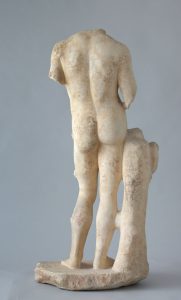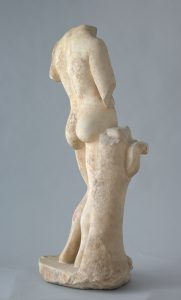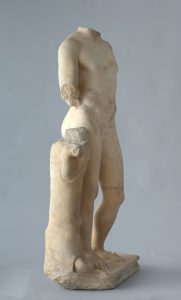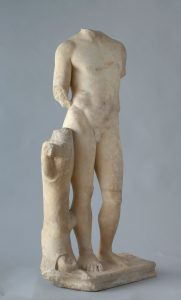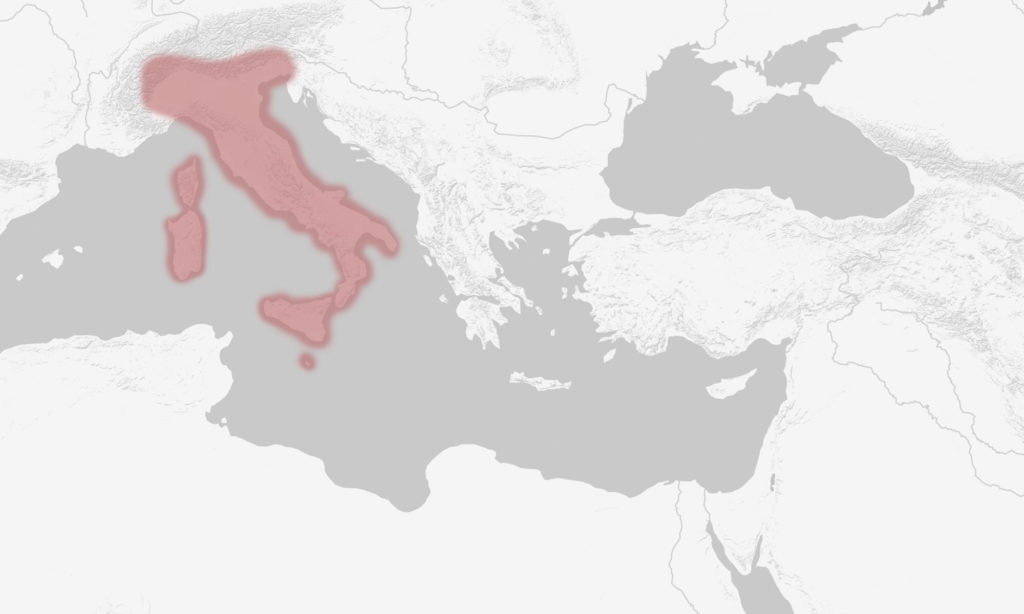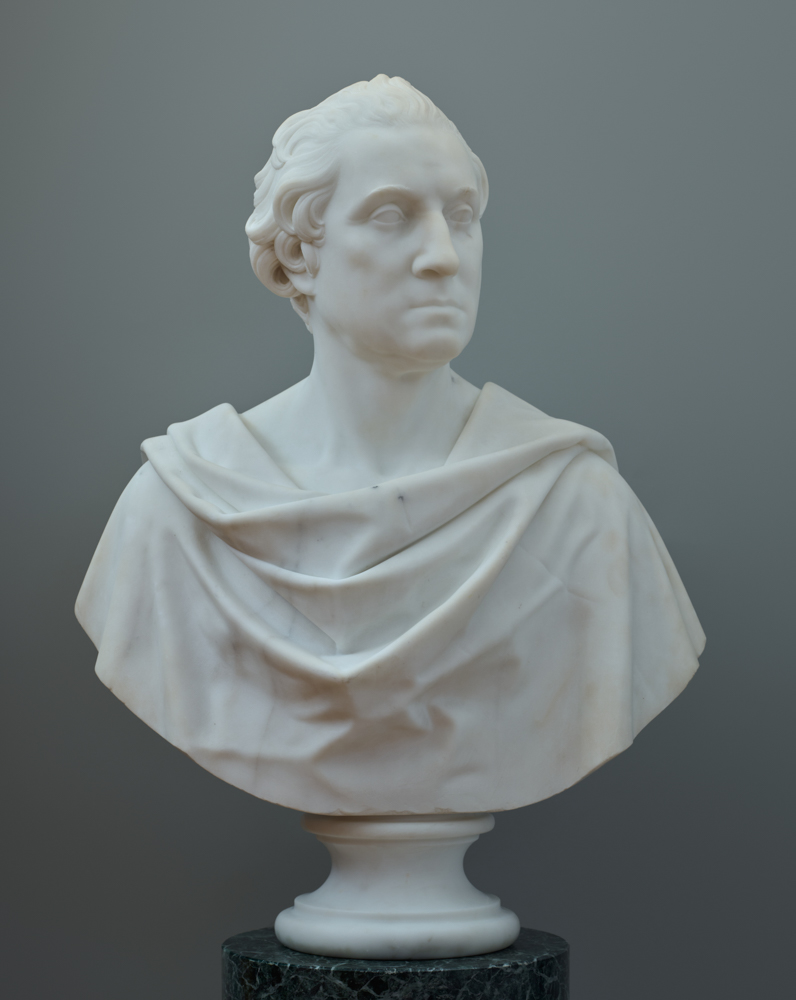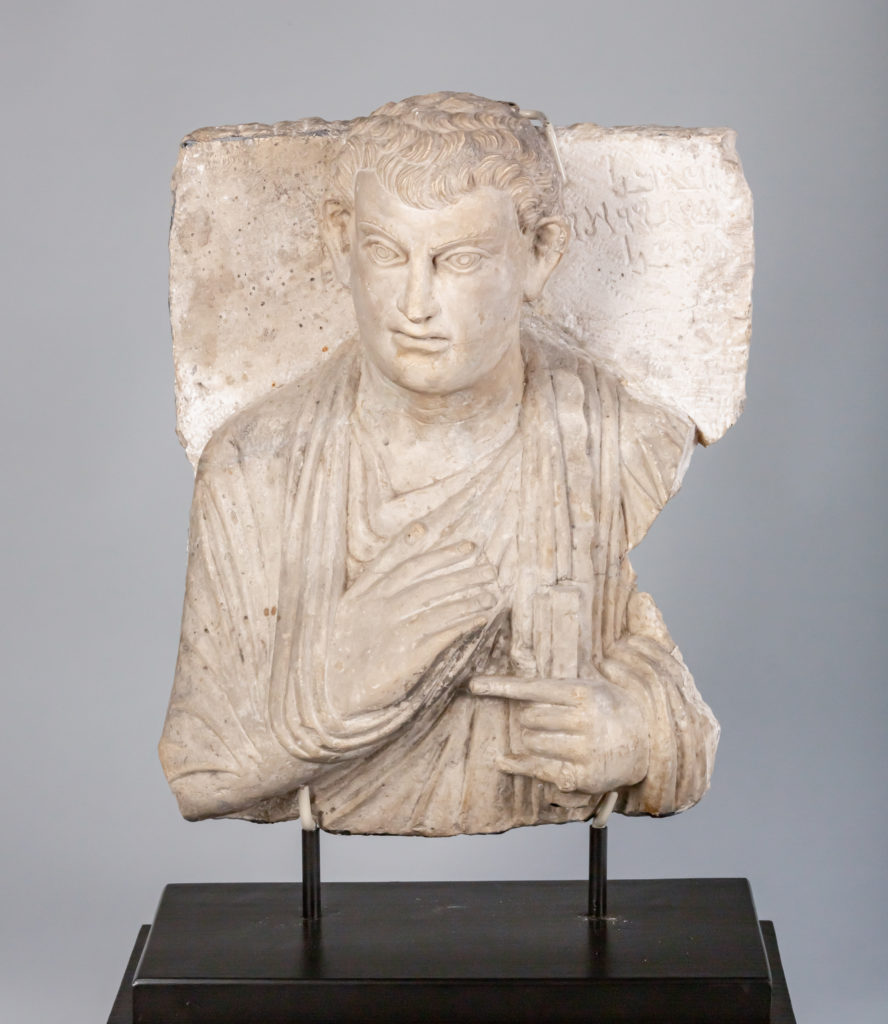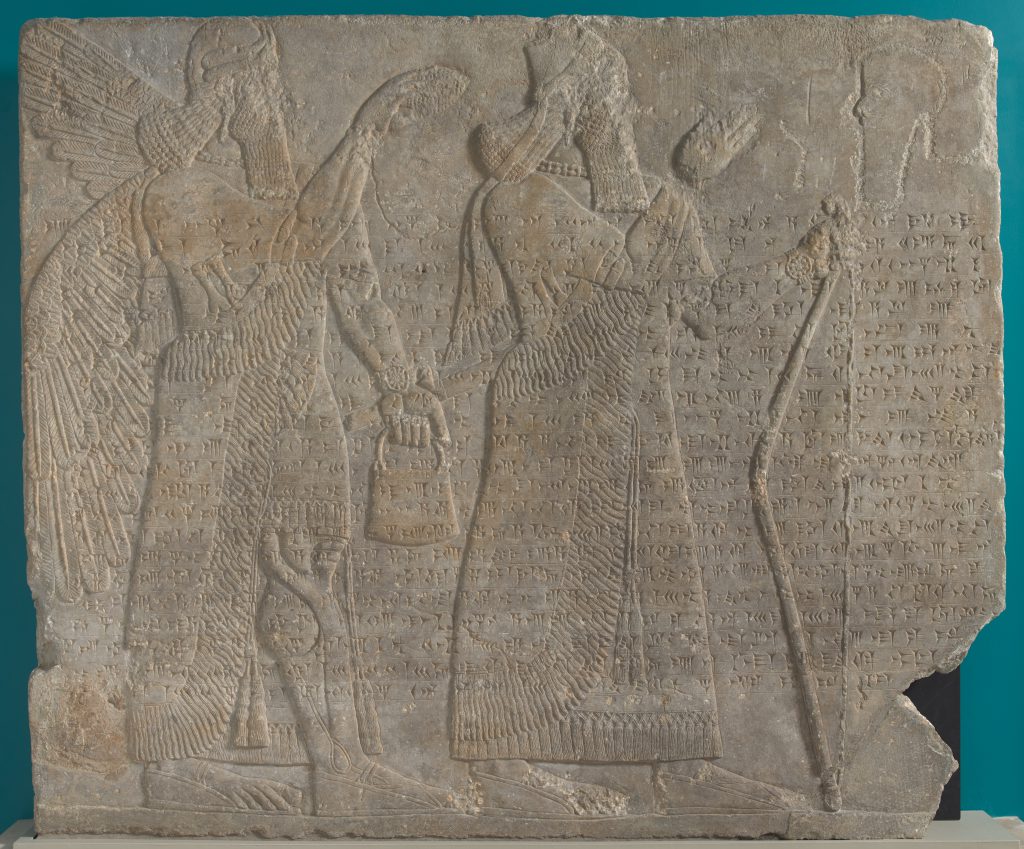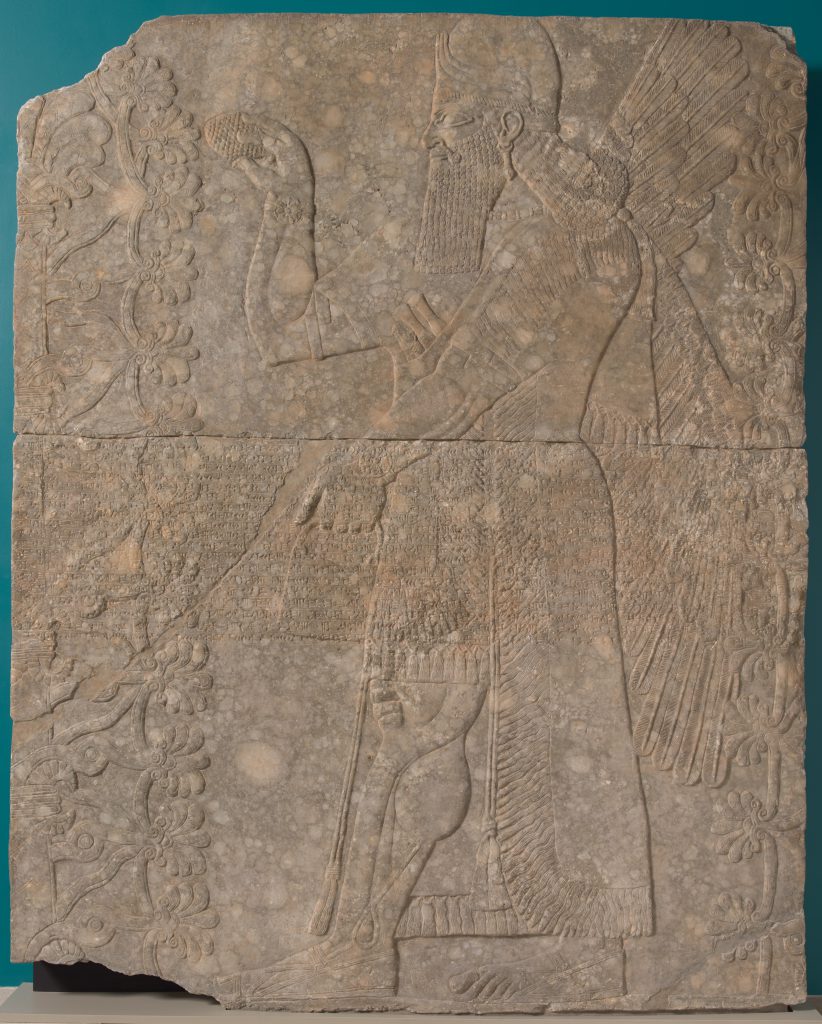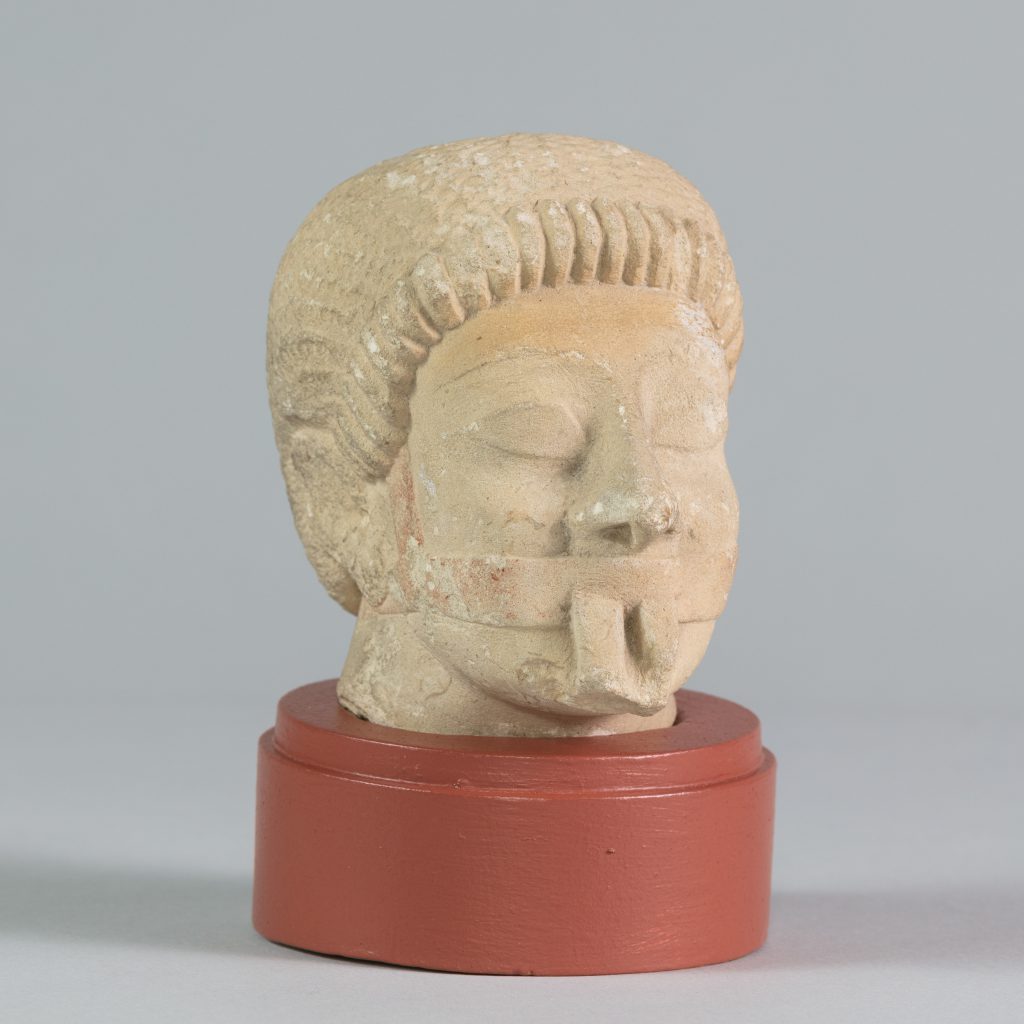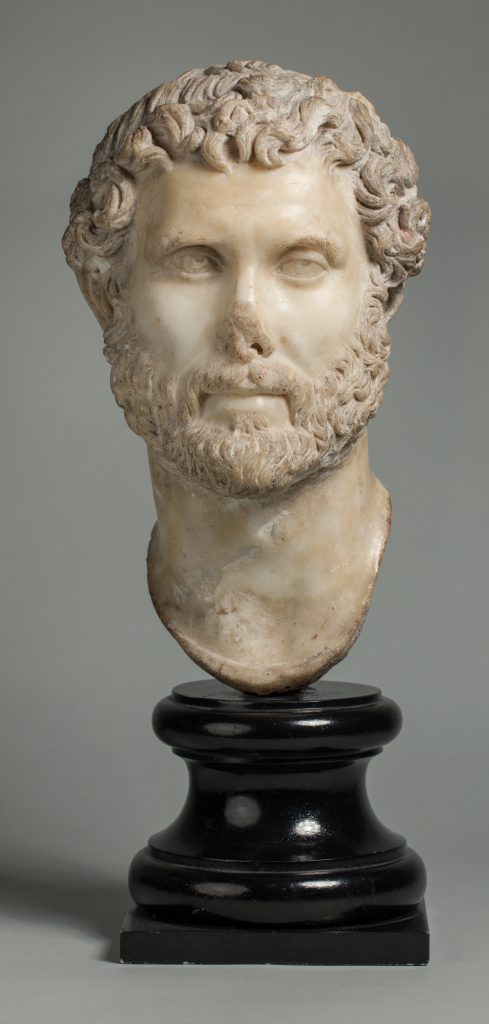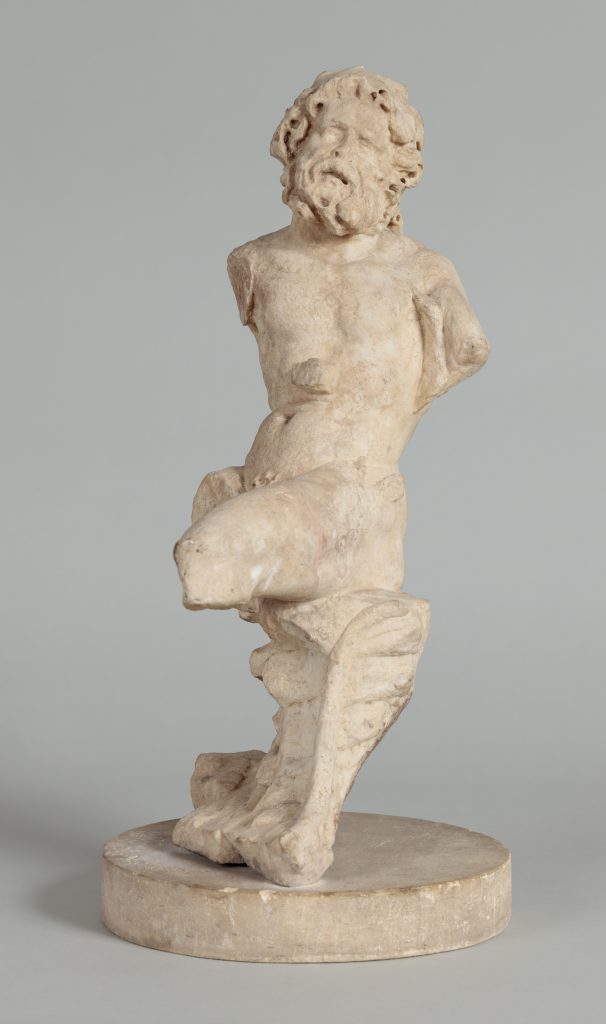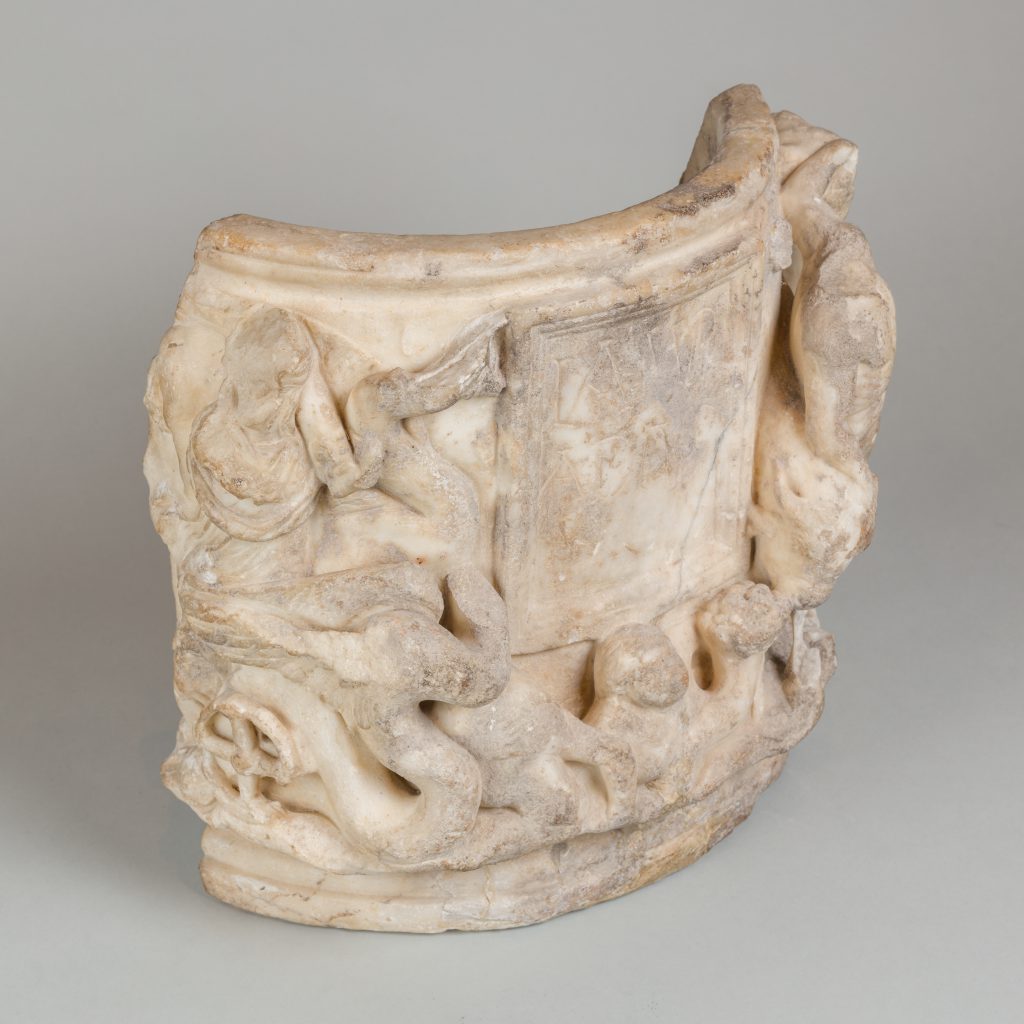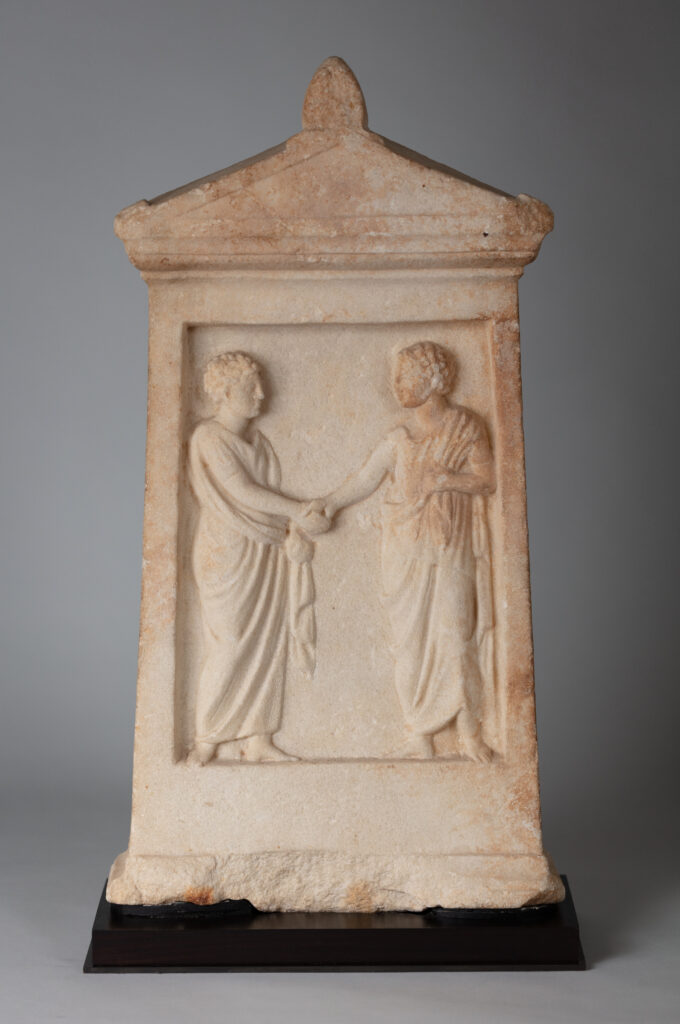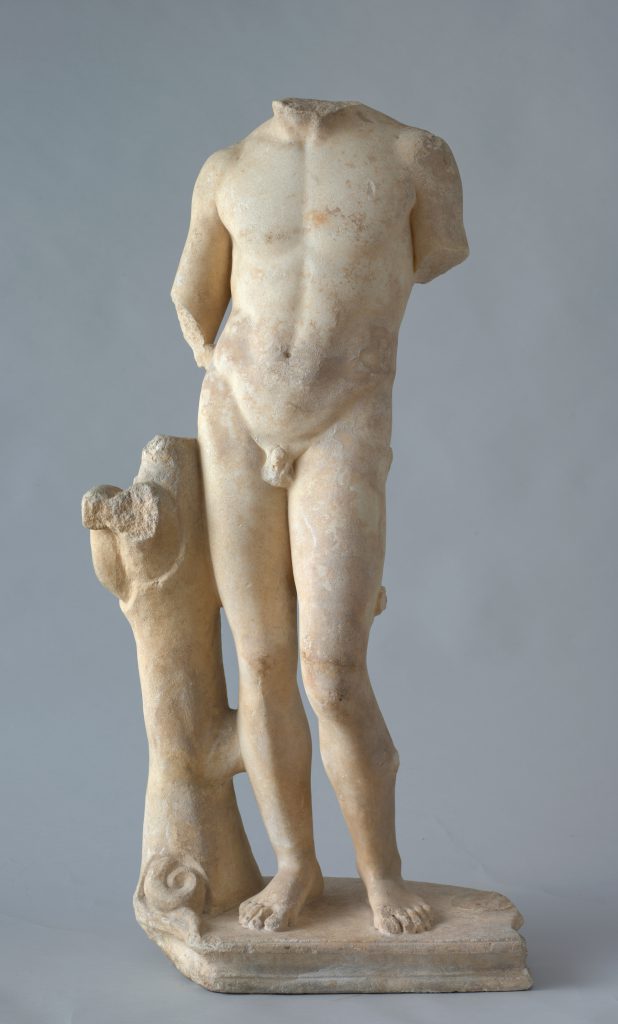


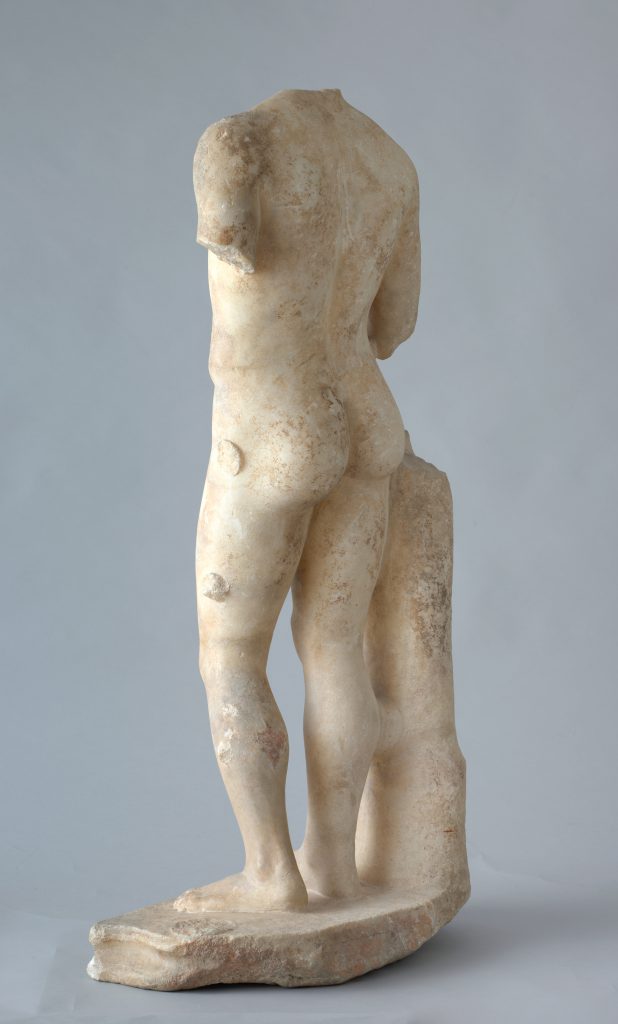
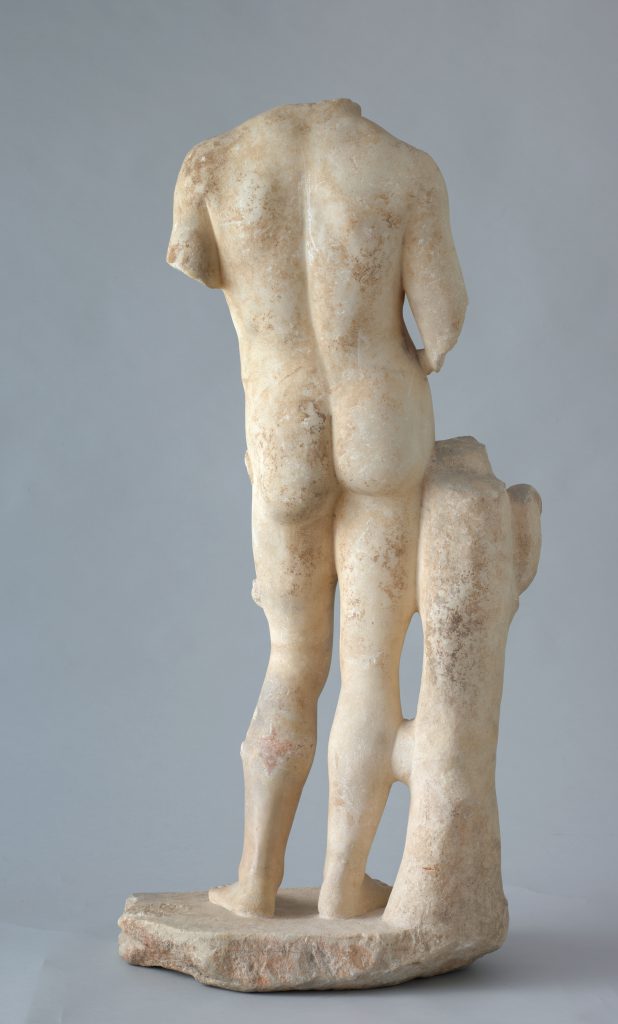

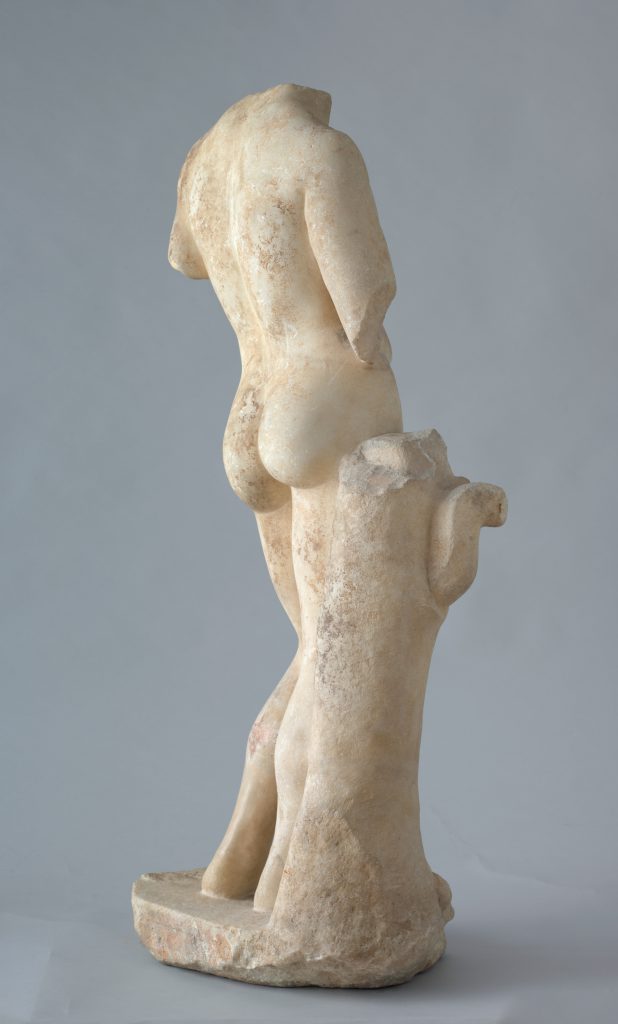
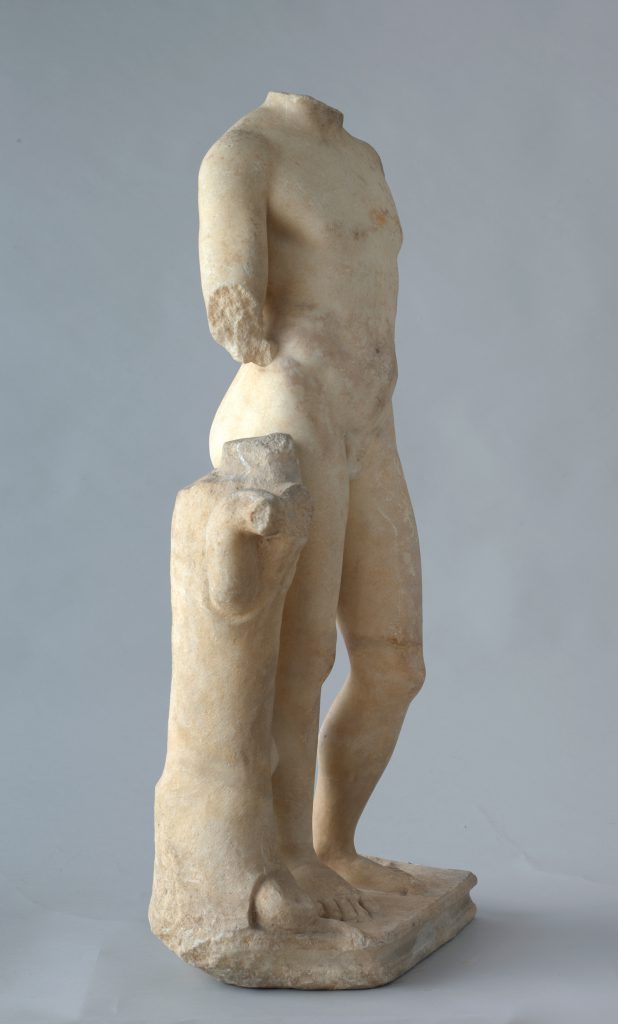
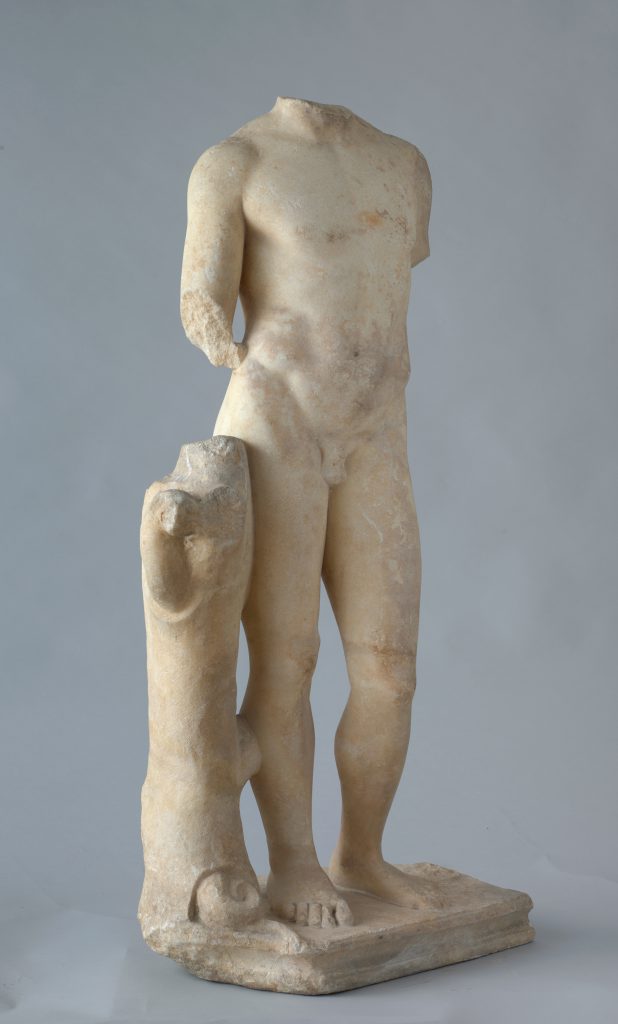
Gift of Nathan Dane
1961.97The pose and proportion of the statue recall male figures created during the late fifth or early fourth century BCE when Greek sculptors employed mathematical rules to achieve an ideal body type. Poses from this era were also more naturalistic, offering different perspectives as the viewer moves around the sculptures. However, the heavy use of supporting elements, such as the tree stump and a missing strut on the figure’s left, suggests that this statue is a later version—a copy—of an original work in bronze, a medium that would not need such structural additions. The addition of a snake, which coils in and around the tree stump, with a male youth could indicate that the figure is a young Apollo whose victory over the serpent Pytho assured his preeminence at Delphi as Pythian Apollo.
Greek artisans were renowned across the ancient world for accomplishments in sculpture, and contemporary and later cultures—including the Persians and Romans—coveted, collected, and copied their marble sculptures. The popularity of Greek sculpture among Roman patrons in the late Republic and Imperial periods, and the high regard in which Romans held earlier Greek art and literature, is an early example of antiquarian culture. By the third century BCE, wealthy Romans coveted and collected works of earlier Greek art, the act of which was meant to demonstrate their cultural sophistication. Already regarded as the height of artistic achievement, sculptures in bronze and marble were especially sought out and were used by Romans to decorate their villas and gardens. Roman sculptors across the empire copied Greek models with greater or lesser degrees of exactitude, sometimes employing plaster casts and mechanical means, other times copying well-known poses or statue groups with more freedom.
For centuries, Roman copies were valued mostly for what they reveal about lost original Greek sculptures. Today, a reassessment of the freedom and ingenuity with which Roman sculptors creatively copied and employed Greek models has led to reappraisal of the skill and ingenuity of Roman artisans. A fascinating historical phenomenon, the Roman vogue for ancient Greek statuary finds modern parallels in the popularity of marble copies and plaster casts of ancient sculptures in the nineteenth century.
Before 1960, acquired by Reginald Goodell, North Windham, Maine; After 1960, inherited by Nathan Dane II, Brunswick, Maine; 1961, gifted to Bowdoin College Museum of Art by Nathan Dane.
